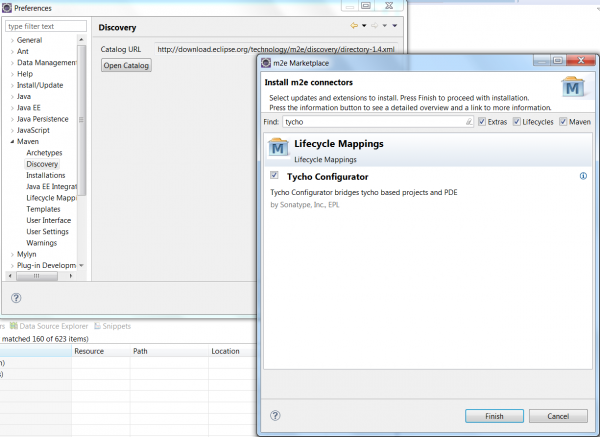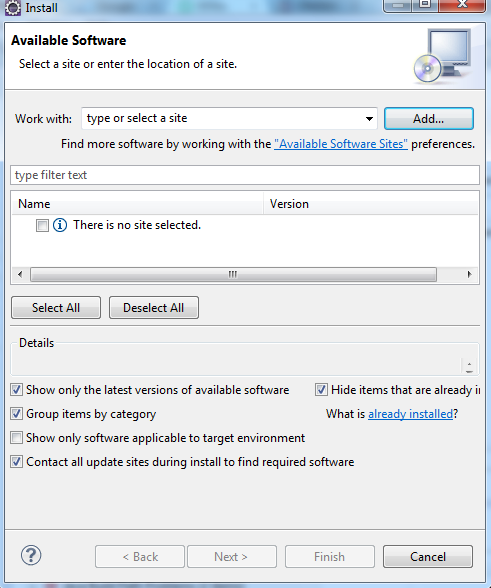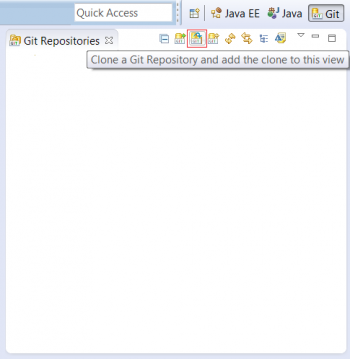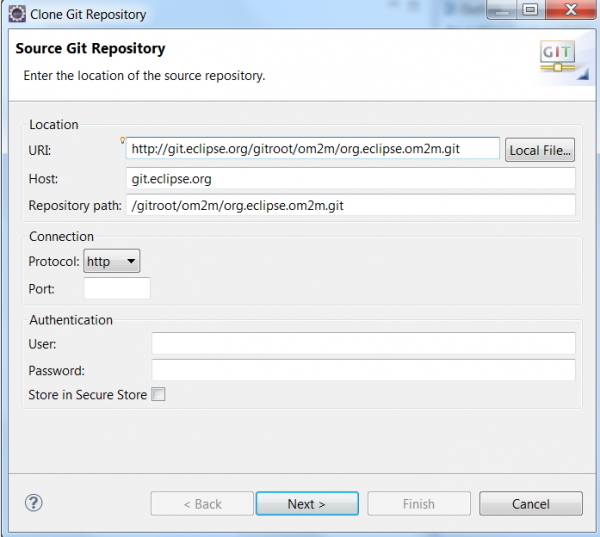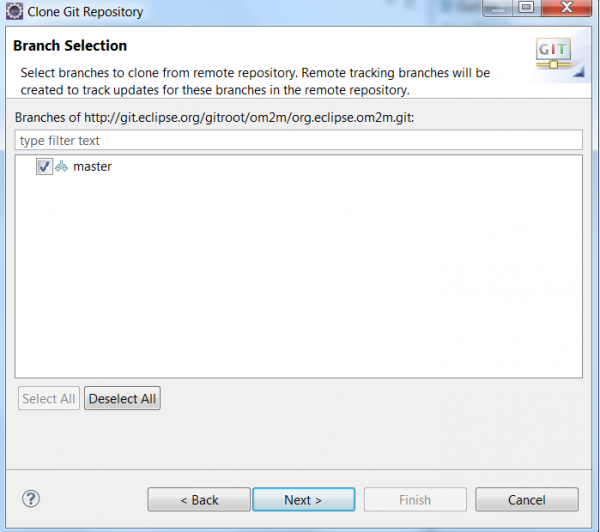Notice: this Wiki will be going read only early in 2024 and edits will no longer be possible. Please see: https://gitlab.eclipse.org/eclipsefdn/helpdesk/-/wikis/Wiki-shutdown-plan for the plan.
Difference between revisions of "OM2M/Build"
< OM2M
(→Prerequisite) |
(→Prerequisite) |
||
| Line 6: | Line 6: | ||
[[File:git_clone5bis.png|thumb|center|600px|Maven marketplace]] | [[File:git_clone5bis.png|thumb|center|600px|Maven marketplace]] | ||
| − | + | * If the tycho plugin wasn't available on the Maven marketplace, you can install it manually. To do so, follow these steps: | |
| − | + | ** Select Help -> Install New Software. | |
| − | + | ** Click on the Add button. | |
[[File:tycho_install1.png|thumb|center|600px|Tycho install]] | [[File:tycho_install1.png|thumb|center|600px|Tycho install]] | ||
*** Put in the ''name field'' "tycho0.8" and in the ''location filed'' this url "http://repo1.maven.org/maven2/.m2e/connectors/m2eclipse-tycho/0.8.0/N/LATEST/" | *** Put in the ''name field'' "tycho0.8" and in the ''location filed'' this url "http://repo1.maven.org/maven2/.m2e/connectors/m2eclipse-tycho/0.8.0/N/LATEST/" | ||
Revision as of 15:40, 4 November 2014
Prerequisite
- Eclipse kepler (for RCP and RAP Developers).
- To build the OM2M project into Eclipse, a Tycho m2e connector is needed. Installation of m2e connectors is accomplished as follows: click Window -> Preferences -> maven -> discovery -> open catalog and type Tycho. Check the “Tycho Configurator” checkbox.
- If the tycho plugin wasn't available on the Maven marketplace, you can install it manually. To do so, follow these steps:
- Select Help -> Install New Software.
- Click on the Add button.
- Put in the name field "tycho0.8" and in the location filed this url "http://repo1.maven.org/maven2/.m2e/connectors/m2eclipse-tycho/0.8.0/N/LATEST/"
Build OM2M from source using Eclipse
Clone The OM2M project
- Select Windiow->Show View -> Other .
- In the dialog box, select the Git view.
- Click on “Clone a Git repository”.
- Clone the OM2M project using the following link: http://git.eclipse.org/gitroot/om2m/org.eclipse.om2m.git. In the first page, enter the mentioned link in the URI’s location field. Click Next .
- In the second page, keep the “master” branch checkbox selected and click Next.
- In the third page, check the “import all existing projects after clone finishes” and click “Finish”.
- The OM2M project is now cloned and is visible on the Git repositories’ and Package’ explorers.
- Now we will add the required libraries. This step will be removed when all third libraries will be validated by Eclipse.
- Download the libraries from this link: http://wiki.eclipse.org/OM2M/Download
- Extract OM2M-libs and add the following libraries to "org.eclipse.om2m" repository as follows:
- "db4o-core-java5-8.1-SNAPSHOT.jar" library under "org.eclipse.om2m.core\libs",
- "obix.jar" library under "org.eclipse.om2m.commons\libs",
- "xsd" folder under "org.eclipse.om2m.commons\src\main\resources".
- After adding the required librairies, update the org.eclipse.om2m package. To do so, select the package "org.eclipse.om2m" -> right click -> maven -> update Project.
Build OM2M using maven
- Select “org.eclipse.om2m” package and right click. Select “Run as -> maven install”.
- Two Eclipse products will be generated after a successful built:
- The NSCL product can be found on this directory: "om2m/org.eclipse.om2m/org.eclipse.om2m.site.nscl/target/products/nscl/<os>/<ws>/<arch>"
- The GSCL product can be found on this directory: "om2m/org.eclipse.om2m/org.eclipse.om2m.site.gscl/target/products/gscl/<os>/<ws>/<arch>"

